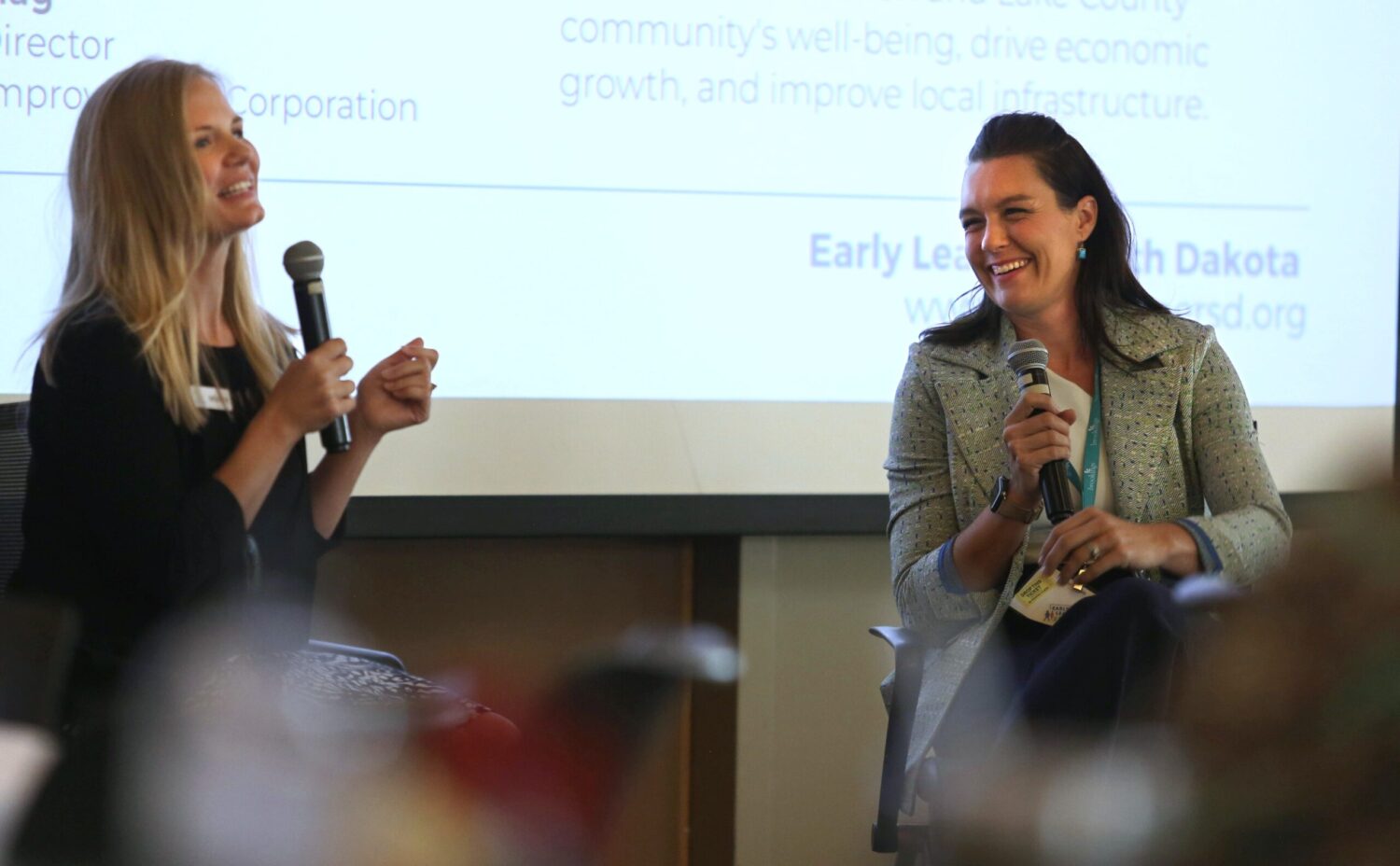
Makenzie Huber/South Dakota Searchlight
Brooke Rollag cannot work without child care.
The mother of four is the economic development director for the Lake Area Improvement Corporation in Madison.
Her job is to understand what businesses need to locate and expand in the area. And in Madison, those businesses need child care.
“Child care is infrastructure,” Rollag said. “When you view it as a necessary means for people to go to work, that’s infrastructure.”
Madison, a city of over 6,000, does not have any child care centers. It relies solely on in-home providers.
Rollag partnered with the city of Madison to create a tax increment financing (TIF) district with four businesses in the Lakeview Industrial Park. The TIF was approved by Madison city commissioners in May.
TIF districts provide upfront financing for public improvements and then capture the new and higher property taxes generated by a development project to pay off the financing. The public improvements are usually infrastructure such as roads, sidewalks, sewer and water lines.
But the new TIF will pay for the construction of a child care center. It’s the first time a community in South Dakota has used TIF money for that purpose, Rollag said.
“TIFs are, in my opinion, one of the greatest local tools we have,” said Rollag, who’s been working on the project for over two years. “The county and the city say, ‘We see value in the project you’re proposing.’ If not for this TIF project, the business would have a hard time moving forward. If not for this TIF, I don’t know how we’re going to build solutions for child care here.”
Sioux Falls-based child care nonprofit Embe will operate the center, set to break ground in spring 2024 and open in 2025. The 14,000 square foot, state-licensed facility will accommodate up to 140 children.

The building — which will cost around $4 million — will be owned by the Lake Area Improvement Corporation. The TIF will provide about $1.7 million for constructing the building, conservatively, but could generate up to $3 million. The rest of the money will be raised in a capital campaign led by Rollag.
The child care center will be built on 1.5 acres of park space in Madison — an underutilized T-ball diamond. Rollag worked with the city; South Dakota Game, Fish and Parks; and the National Park Service to remove the space from protected park status, since the park had previously received federal grant funds to build tennis courts.
While Madison is using a TIF in a new way, local governments across South Dakota are taking steps to support child care and economic development needs in their communities, said Mike Bockorny, CEO of the Aberdeen Development Corporation and chair of the South Dakota Economic Development Professionals Association.
Those local governments have utilized grants, loans and capital campaigns to build child care facilities. Local businesses have also supplemented some child care costs in communities.
“Smaller communities have to have a city or county play a role. Larger communities with larger economic development organizations probably have more resources and can look at taking care of things in different ways,” Bockorny said. “There’s not a one-size fits all approach, and every community has to come up with creative solutions.”
Bockorny has known about child care challenges in Aberdeen for the past eight years. The Aberdeen Development Corporation surveys its partners each year asking what challenges they’re facing and how the organization can help with their needs.

When he first heard the concerns, Bockorny worked with a church to establish a child care center in a building near Aberdeen’s five industrial parks. He helped secure the group a low-interest loan through the development corporation’s loan fund.
Bockorny has since worked with the Aberdeen YMCA to acquire a low-interest loan and fundraise to build a $5 million addition to its child care center, and he’s working with residential home developers on plans to build child care centers in future developments.
“You as a developer put the building up and we help you find someone to lease the property at a reasonable rate, and then people who move into the community with kids can have a child care center right in the middle of a 200 housing development,” Bockorny said.
With the years of work Bockorny and Rollag have put into supporting the dual child care-economic growth needs of their communities, there’s still more work needed. Bockorny said a recent study in Aberdeen showed the city is short 500 child care spots, and Rollag estimates Madison will still be short spots despite the new center.
Bockorny expects it’ll take several more years until South Dakota and its communities find a balance between child care and economic development.
“If you’re missing a group of spokes on a bicycle wheel, you’ll have a big bump on your ride and it won’t be comfortable. By not having needed child care, we’re missing spokes,” Bockorny said. “We have to figure out how to build those spokes back into the wheel to make this run smoothly.”
